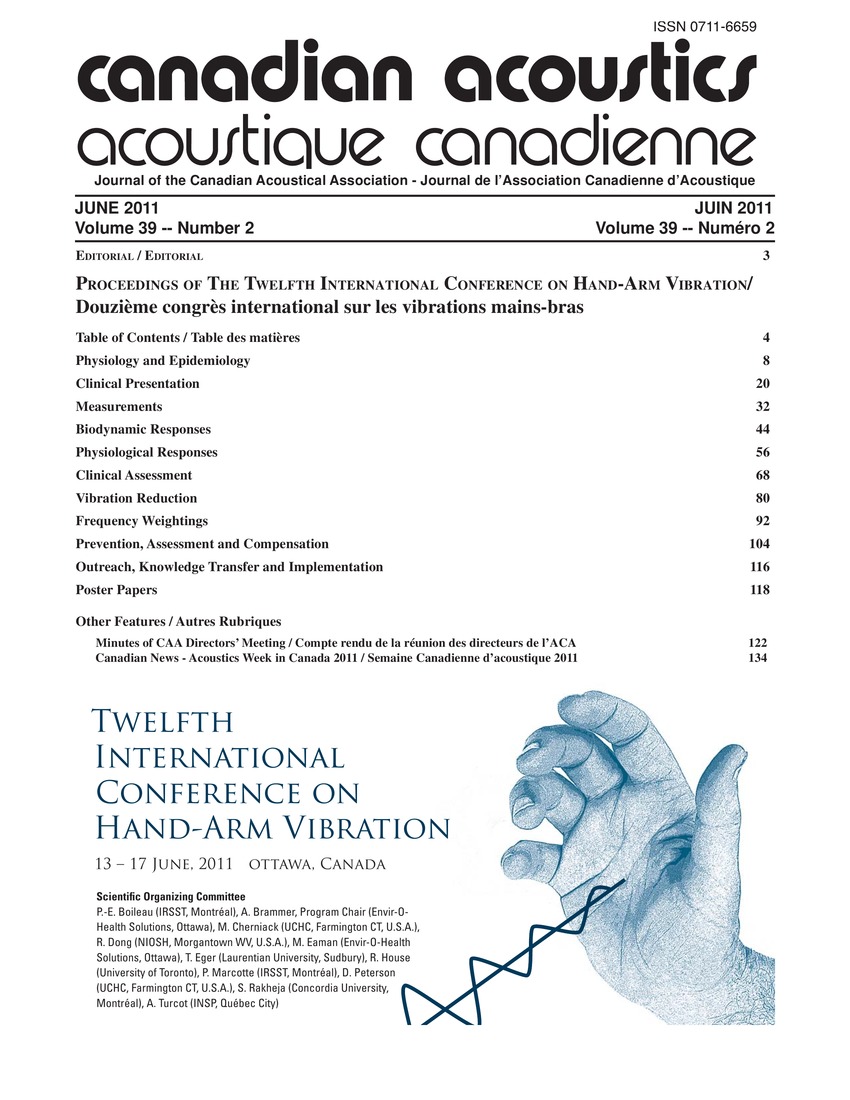New approach to model the hand-arm system for analysis of musculoskeletal disorders
Keywords:
Ergonomics, Muscle, Analysis approach, Damper systems, Equilibrium point, Grip force, Hand-arm system, Hand-arm vibration, High frequency, Muscle models, Musculoskeletal disorders, Static loads, Tool vibrations, Vibration forcesAbstract
A new analysis approach is developed for hand-arm vibration analysis of musculoskeletal disorders. At a given equilibrium point, the musculo-tendon system can be interpreted as a spring damper system. It is considered that the Flexor Digitorum Profundus (FDP) and Lumbrical (LU) are participating in the response to the vibration force. The study shows that realistic muscle models should be included in the vibration analysis of the hand-arm exposed to tool vibration. The hand-arm system is found to have a redundancy in muscles because it has many more muscles than the minimum number required to establish equilibrium in gripping. An important observation is that bigger extrinsic muscles carry most of the static load to generate the grip force, and smaller muscles carry most tool vibration force at high frequencies.Additional Files
Published
How to Cite
Issue
Section
License
Author Licensing Addendum
This Licensing Addendum ("Addendum") is entered into between the undersigned Author(s) and Canadian Acoustics journal published by the Canadian Acoustical Association (hereinafter referred to as the "Publisher"). The Author(s) and the Publisher agree as follows:
-
Retained Rights: The Author(s) retain(s) the following rights:
- The right to reproduce, distribute, and publicly display the Work on the Author's personal website or the website of the Author's institution.
- The right to use the Work in the Author's teaching activities and presentations.
- The right to include the Work in a compilation for the Author's personal use, not for sale.
-
Grant of License: The Author(s) grant(s) to the Publisher a worldwide exclusive license to publish, reproduce, distribute, and display the Work in Canadian Acoustics and any other formats and media deemed appropriate by the Publisher.
-
Attribution: The Publisher agrees to include proper attribution to the Author(s) in all publications and reproductions of the Work.
-
No Conflict: This Addendum is intended to be in harmony with, and not in conflict with, the terms and conditions of the original agreement entered into between the Author(s) and the Publisher.
-
Copyright Clause: Copyright on articles is held by the Author(s). The corresponding Author has the right to grant on behalf of all Authors and does grant on behalf of all Authors, a worldwide exclusive license to the Publisher and its licensees in perpetuity, in all forms, formats, and media (whether known now or created in the future), including but not limited to the rights to publish, reproduce, distribute, display, store, translate, create adaptations, reprints, include within collections, and create summaries, extracts, and/or abstracts of the Contribution.


